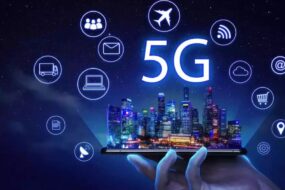Mobile phones have evolved into powerful tools for capturing moments, thanks to the marriage of cutting-edge technology and computational photography. In this exploration, we delve into the realm beyond megapixels, unlocking the secrets behind the rise of computational photography and its transformative impact on mobile imaging.
The Genesis of Mobile Photography
Before we delve into the computational marvels, let’s trace the humble beginnings of mobile photography. From VGA cameras to the era of megapixels, the evolution has been significant. However, sheer pixel count is no longer the sole determinant of photo quality. Mobile photography has undergone a revolution, with computational photography emerging as the driving force.
Decoding Computational Photography
At its core, computational photography is a fusion of hardware and software. It goes beyond the limitations of traditional optics, leveraging algorithms to enhance images. From Google’s HDR+ to Apple’s Deep Fusion, each brand employs unique techniques to optimize image quality. This approach allows for better low-light performance, improved dynamic range, and enhanced details, delivering images that surpass the capabilities of high-megapixel cameras.
AI’s Role in Image Enhancement
Artificial Intelligence plays a pivotal role in computational photography. Machine learning algorithms analyze scenes in real-time, adjusting settings to capture the perfect shot. This marriage of AI and imaging technology ensures that every photo taken is a masterpiece, adapting to diverse shooting conditions seamlessly.
The Impact on Mobile Phones
The integration of computational photography has redefined the capabilities of mobile phones. Users no longer need professional-grade cameras to achieve stunning results. Instead, pocket-sized devices are equipped with advanced image processing, making them powerful photography tools.
Breaking the Megapixel Myth
While megapixels remain a marketing buzzword, the emphasis is shifting towards the quality of each pixel. Computational photography excels in extracting more information from each pixel, resulting in sharper, more detailed images.
Night Mode: Illuminating Darkness
One standout feature of computational photography is Night Mode. By intelligently combining multiple exposures, even the darkest scenes become vibrant and detailed. This feature has become a benchmark for low-light photography, setting new standards for mobile imaging.
Future Trends: What Lies Ahead
As technology advances, so does the potential of computational photography. From real-time object recognition to augmented reality integrations, the future holds exciting possibilities. Mobile phones will continue to push boundaries, offering users unprecedented creative freedom.
Overcoming Challenges
Despite its prowess, computational photography faces challenges. Striking the right balance between image enhancement and maintaining a natural look remains a constant pursuit. Manufacturers must address concerns of over-processing, ensuring that the technology enhances rather than distorts reality.
Final Words:
In conclusion, the rise of computational photography marks a paradigm shift in mobile imaging. Beyond the obsession with megapixels, it’s about harnessing the synergy of hardware, software, and artificial intelligence to create visual masterpieces. As we navigate this transformative era, mobile phones cease to be mere communication devices—they evolve into portals capturing the essence of our world.
Commonly Asked Questions
Q1: Can computational photography replace traditional cameras?
A1: While it can rival traditional cameras in many scenarios, the choice depends on individual preferences and specific photography needs.
Q2: How does Night Mode work?
A2: Night Mode combines multiple exposures to capture more light, resulting in well-lit and detailed photos even in low-light conditions.
Q3: Are all smartphones equipped with computational photography?
A3: Many modern smartphones integrate computational photography, but the extent and quality of features vary among brands and models.
Q4: Does computational photography compromise image authenticity?
A4: Striking a balance is crucial. While it enhances images, efforts are made to preserve the natural look and feel of the scene.
Q5: What’s next for mobile imaging technology?
A5: The future promises innovations like real-time object recognition and augmented reality, pushing the boundaries of what mobile phones can achieve.












